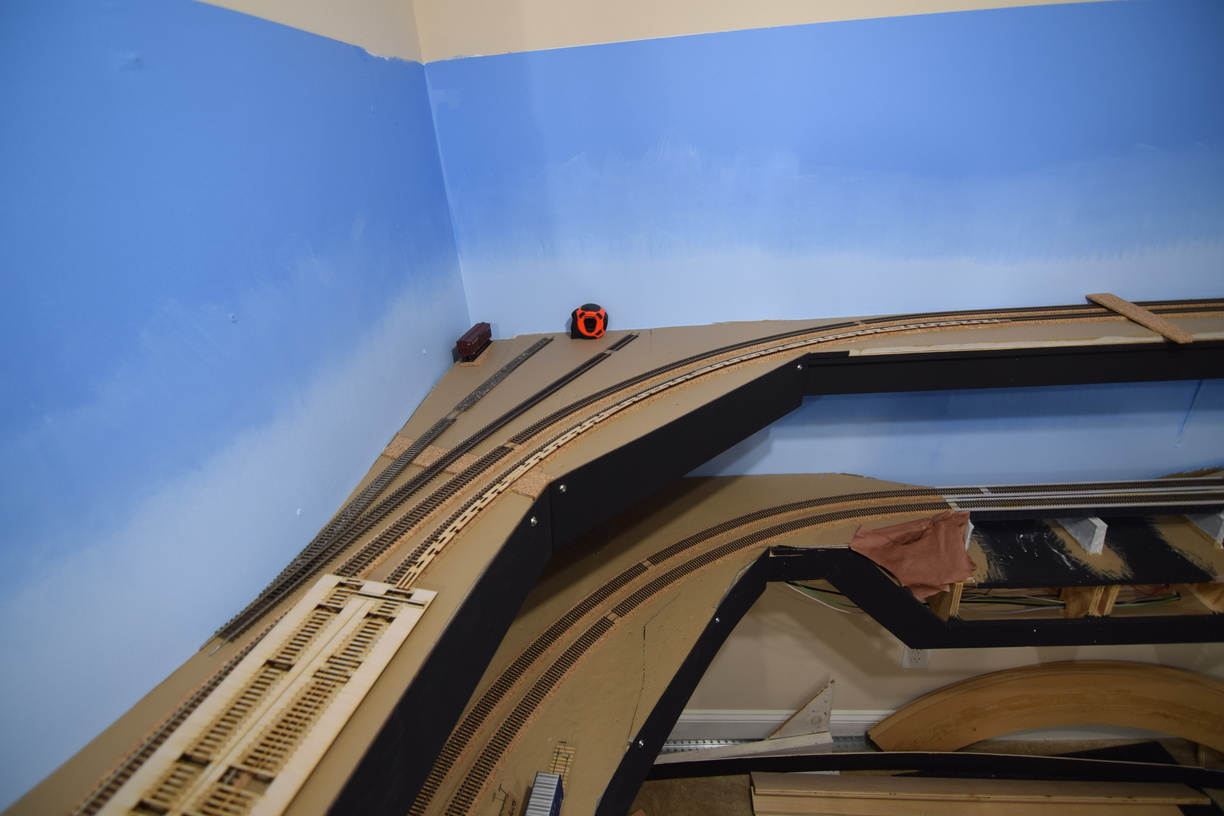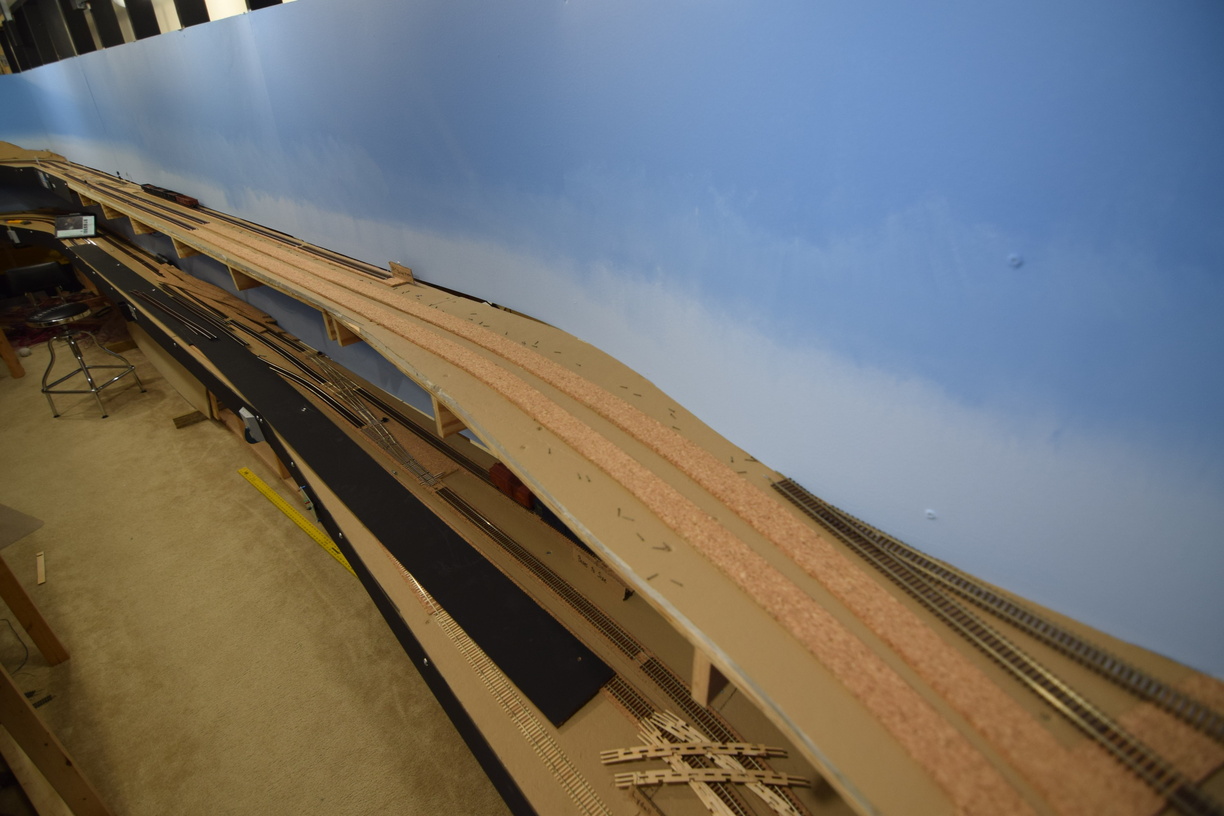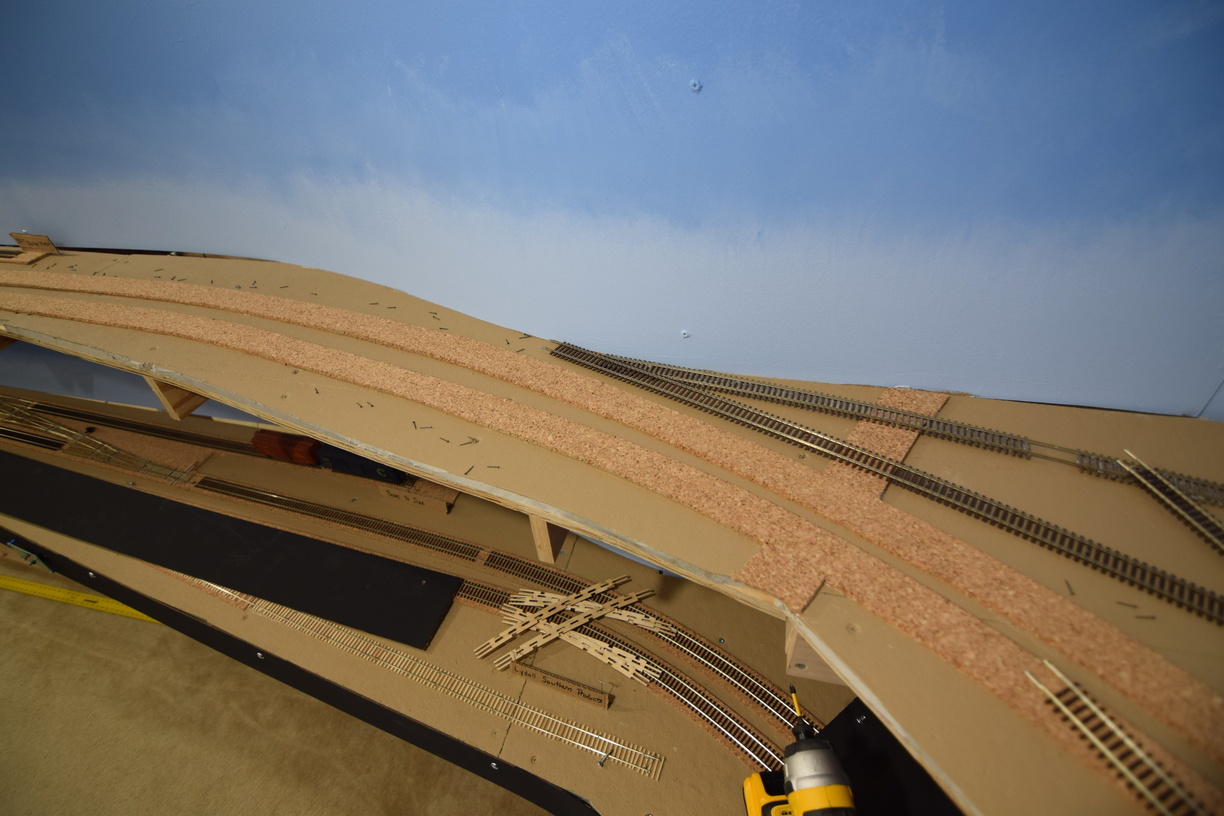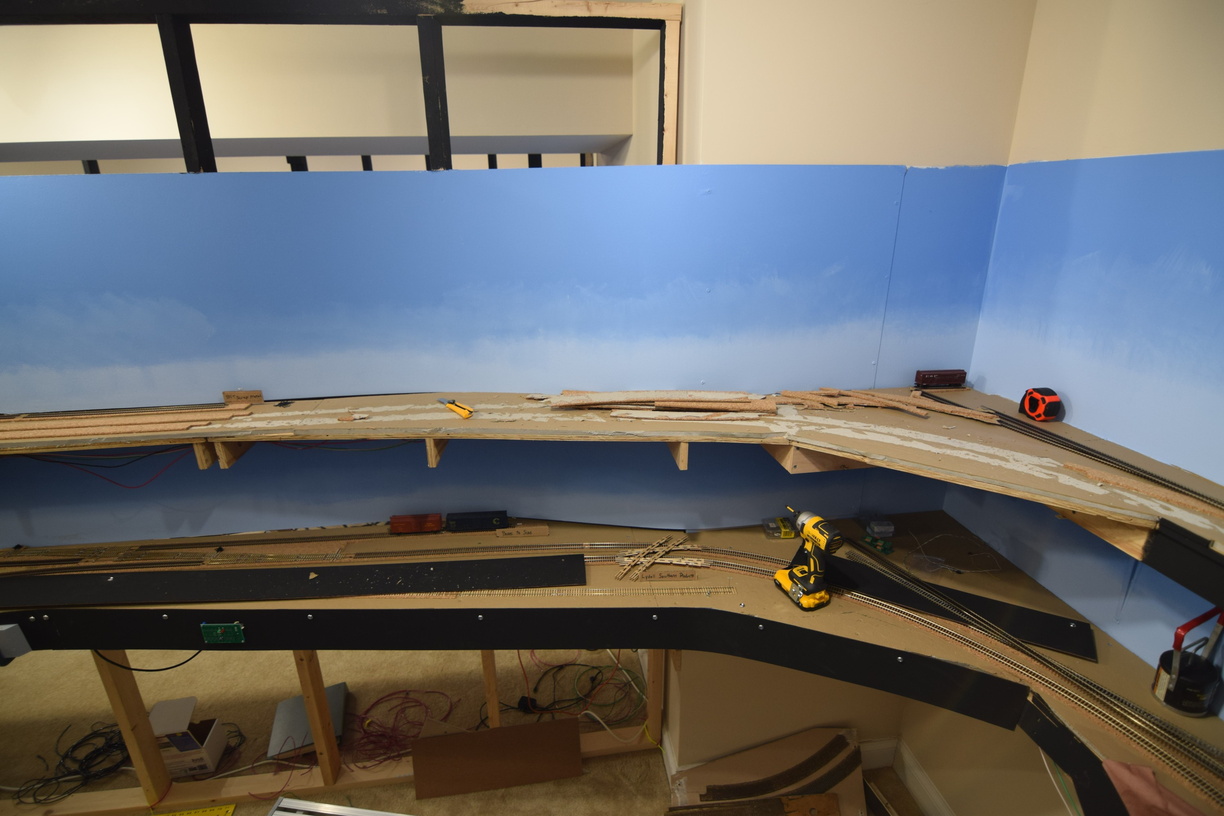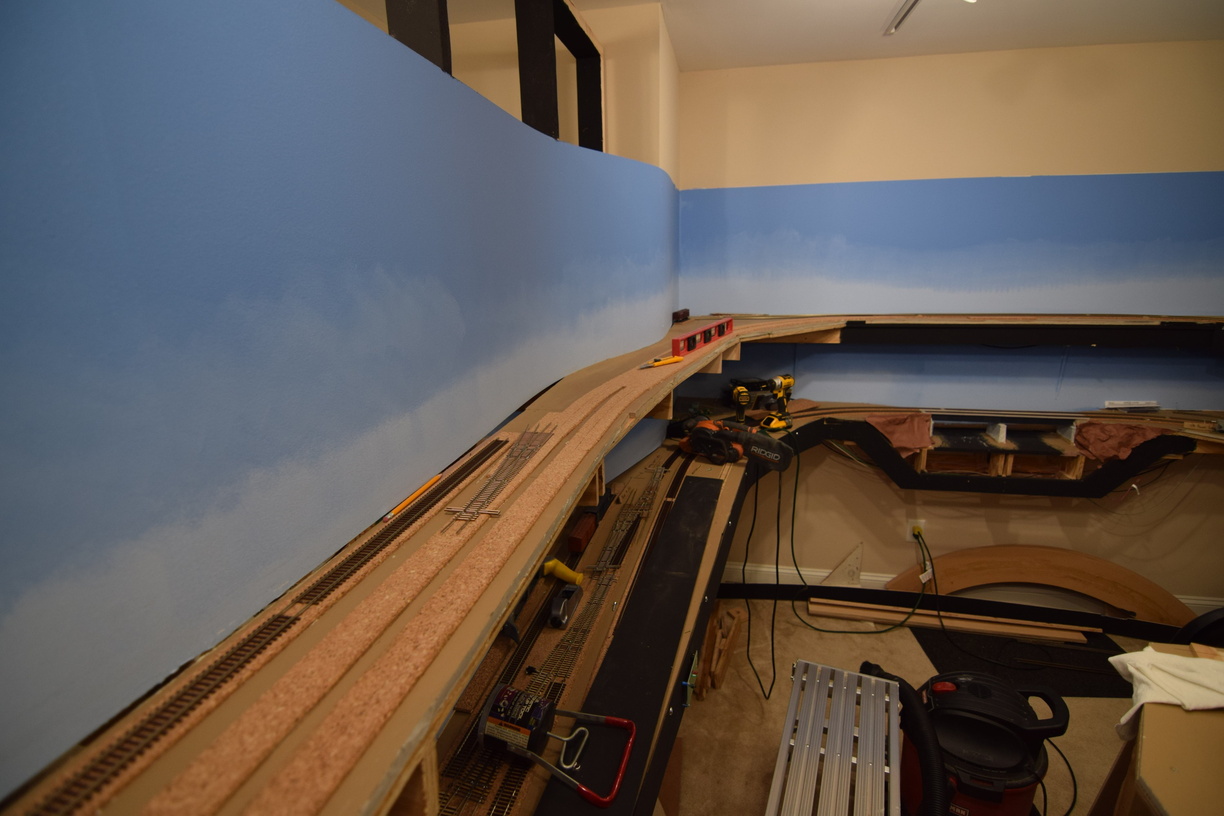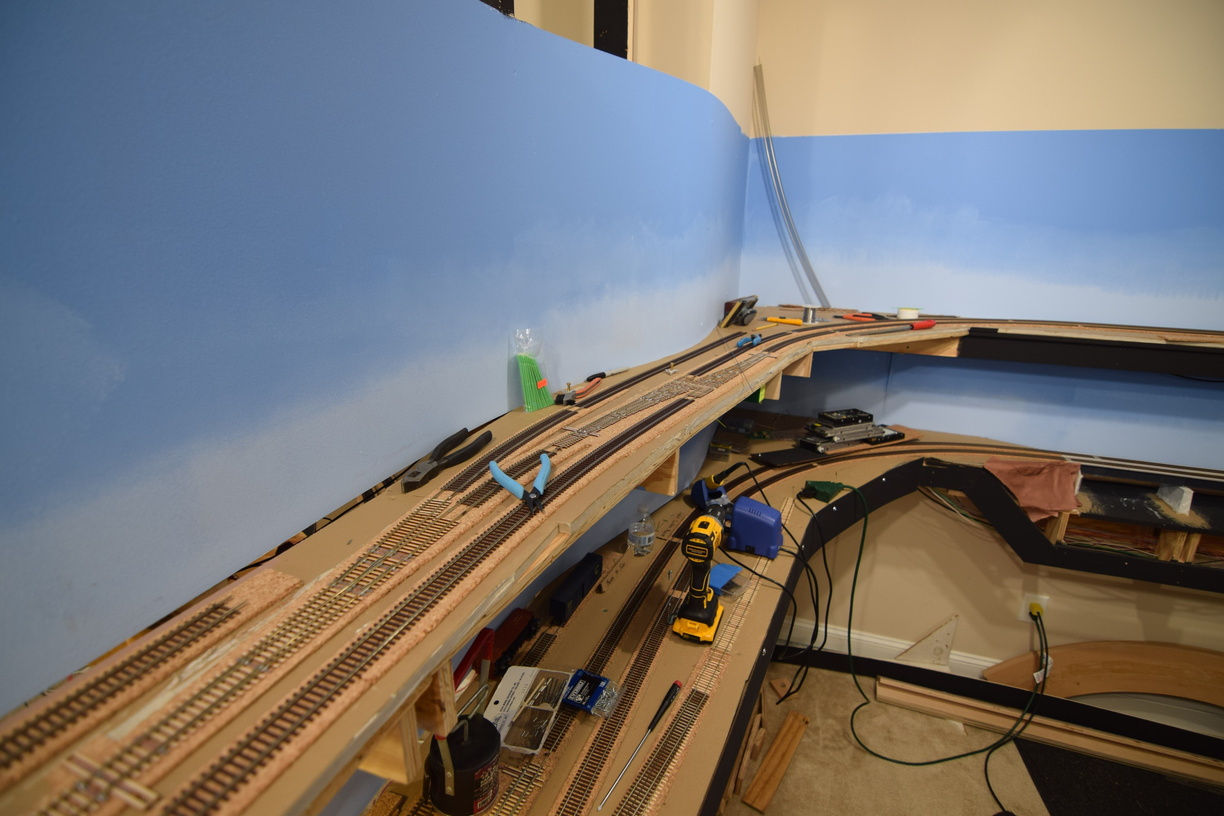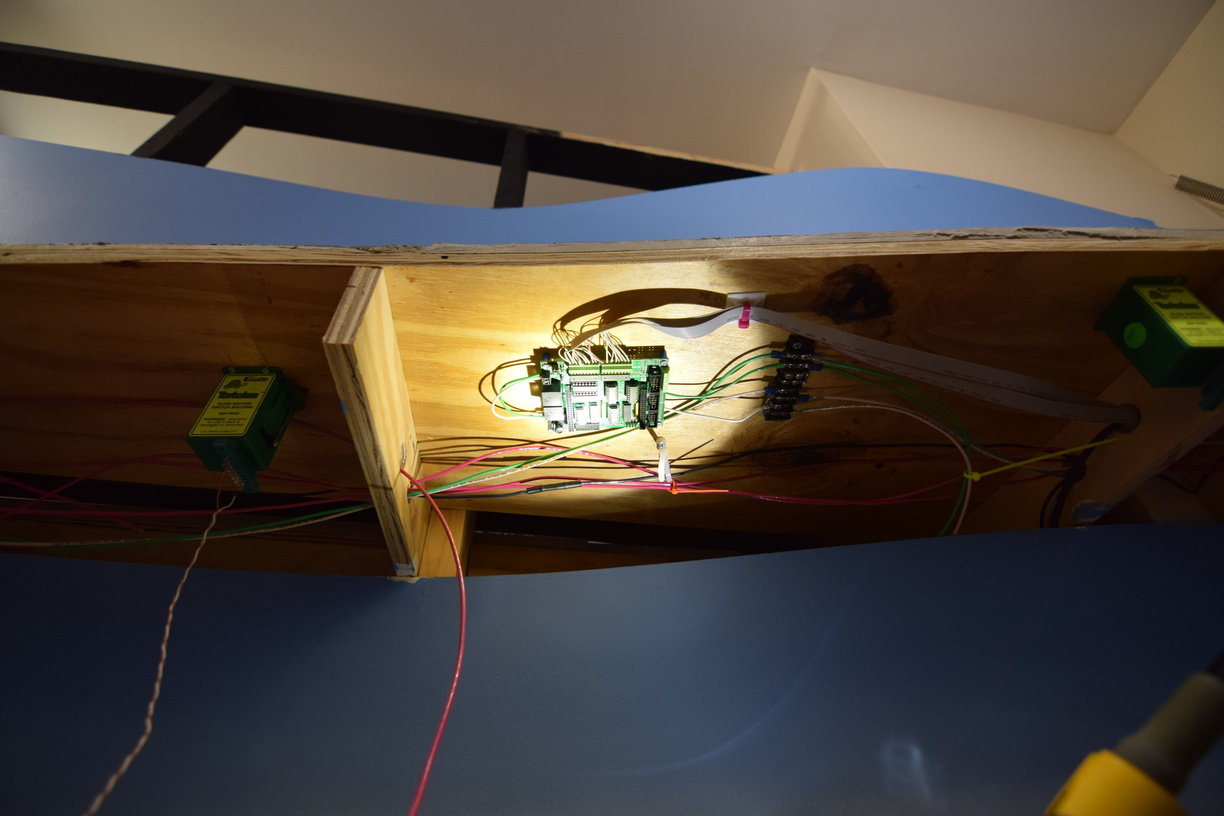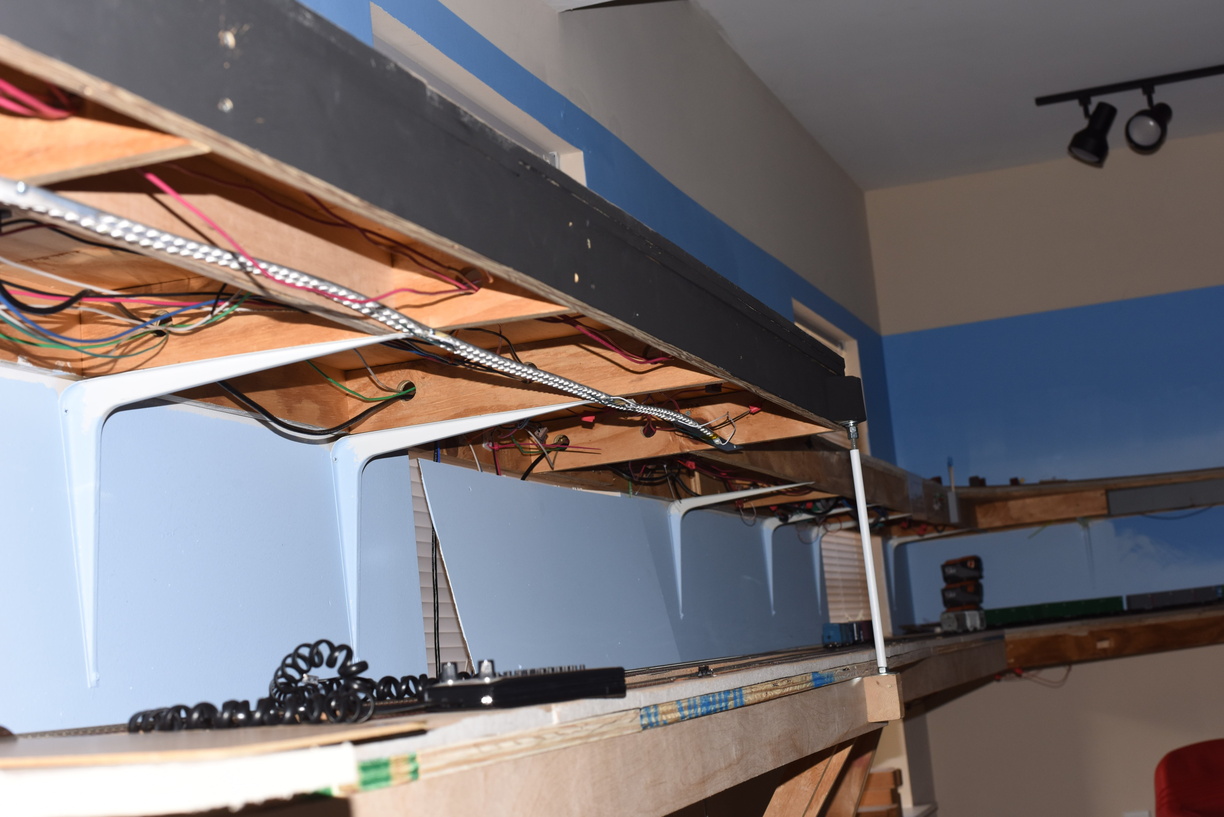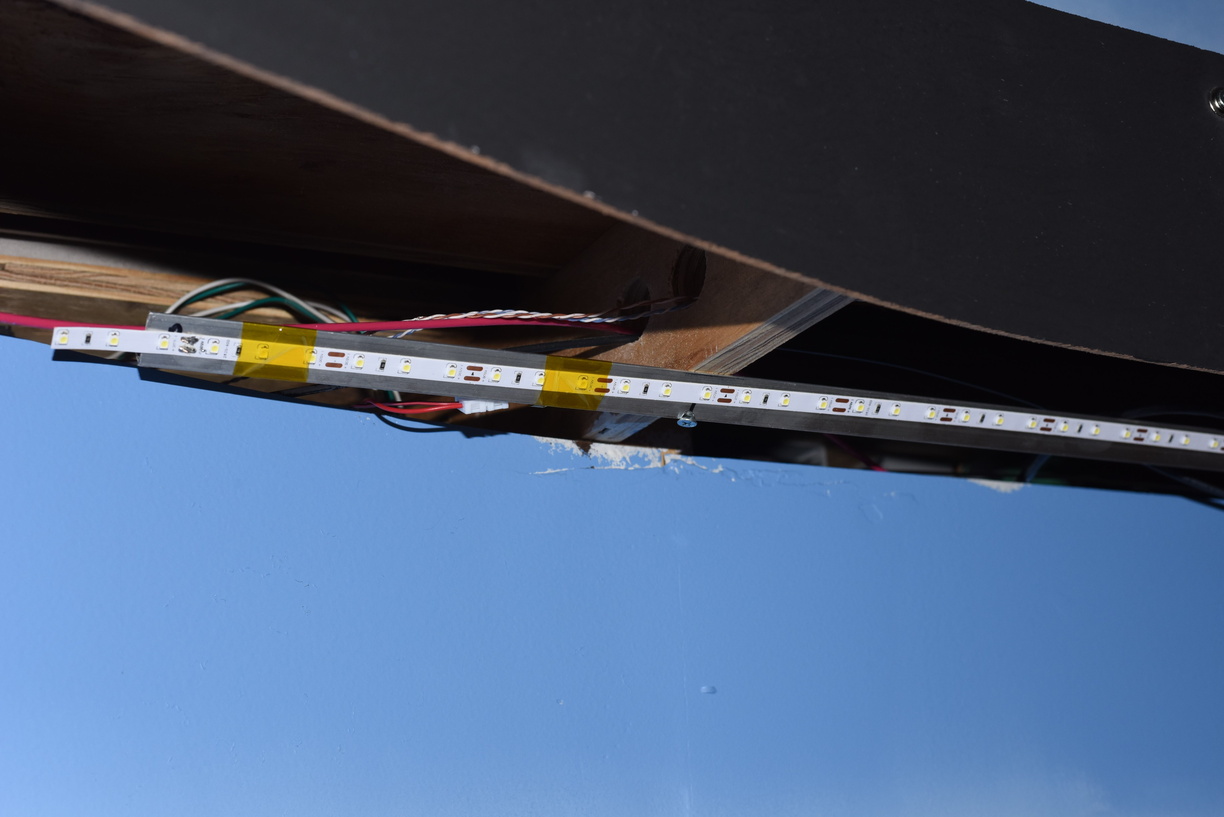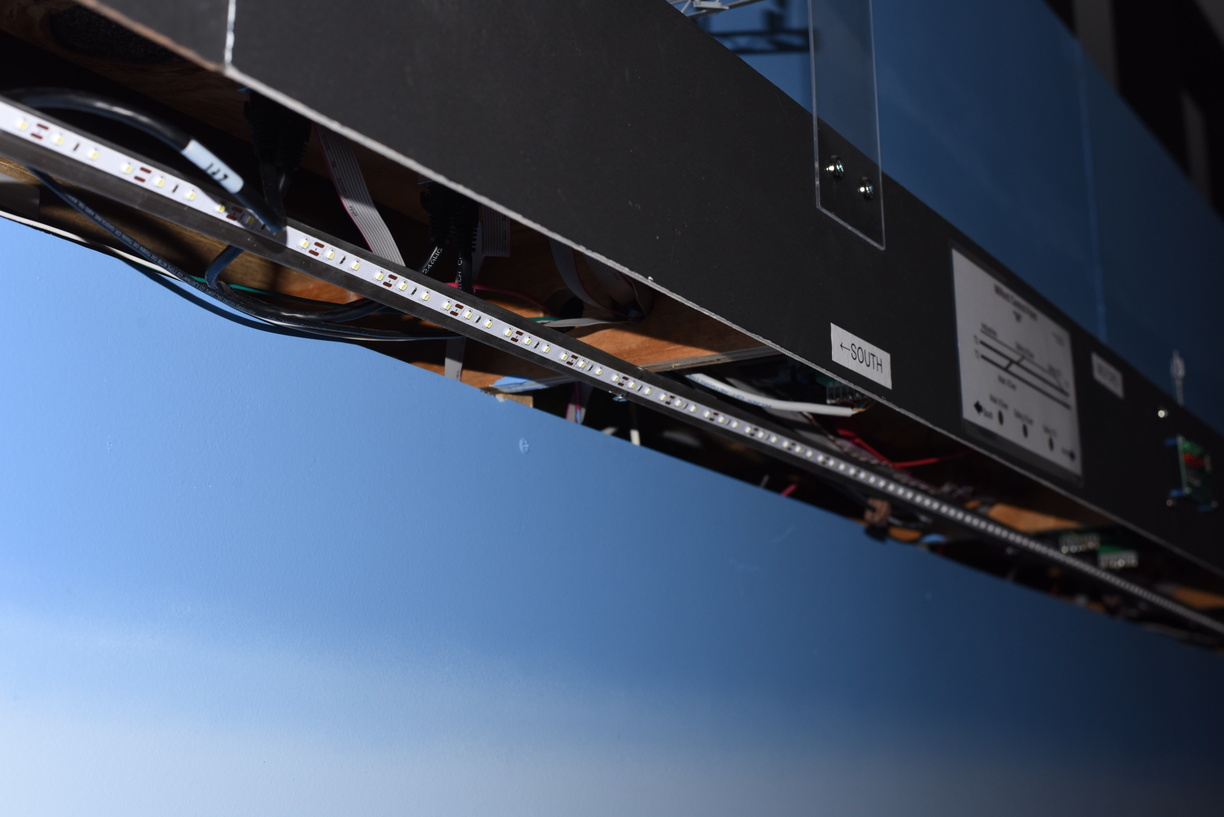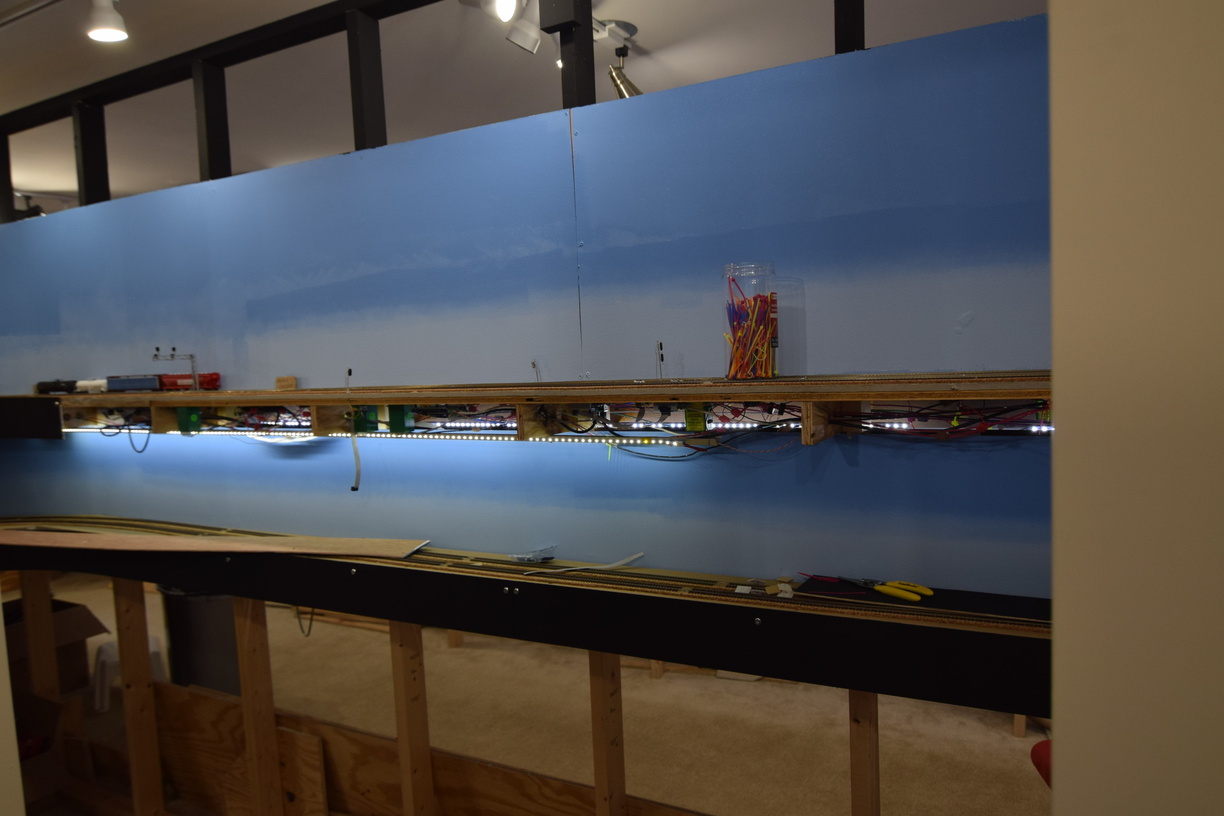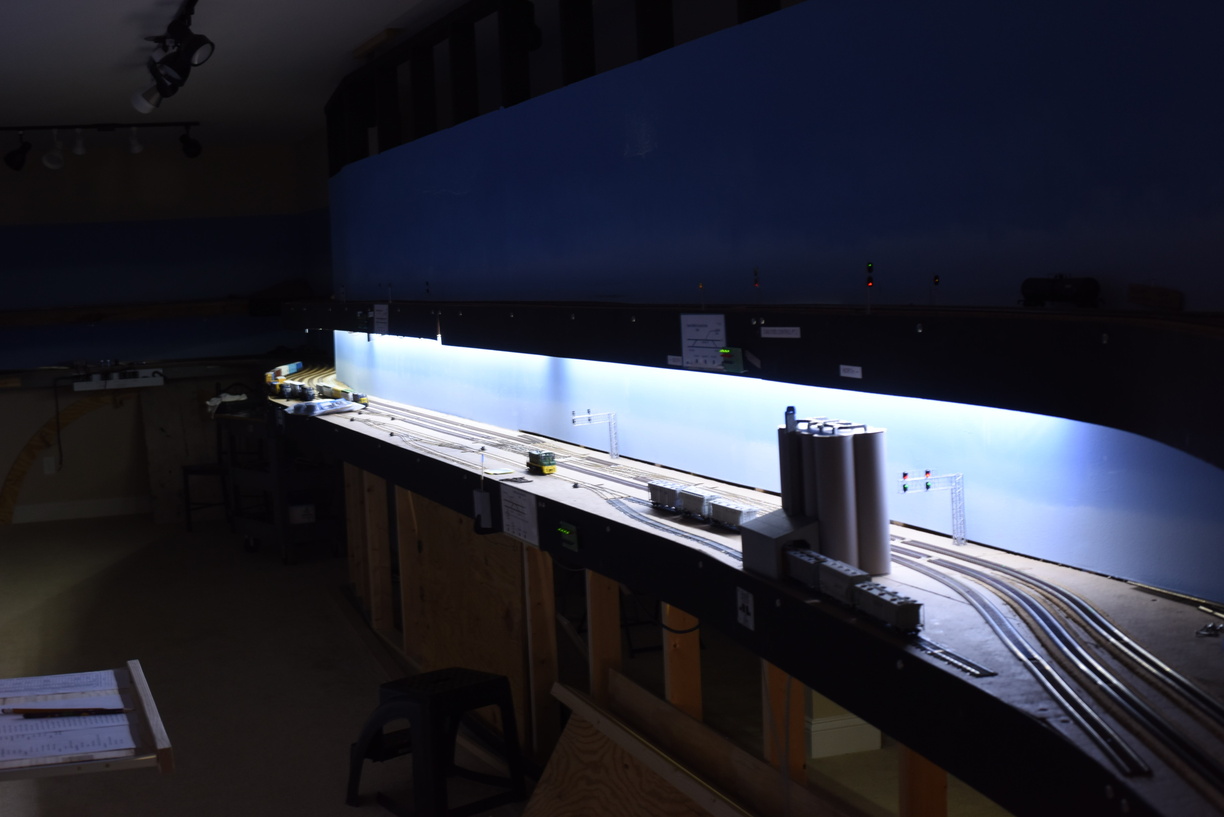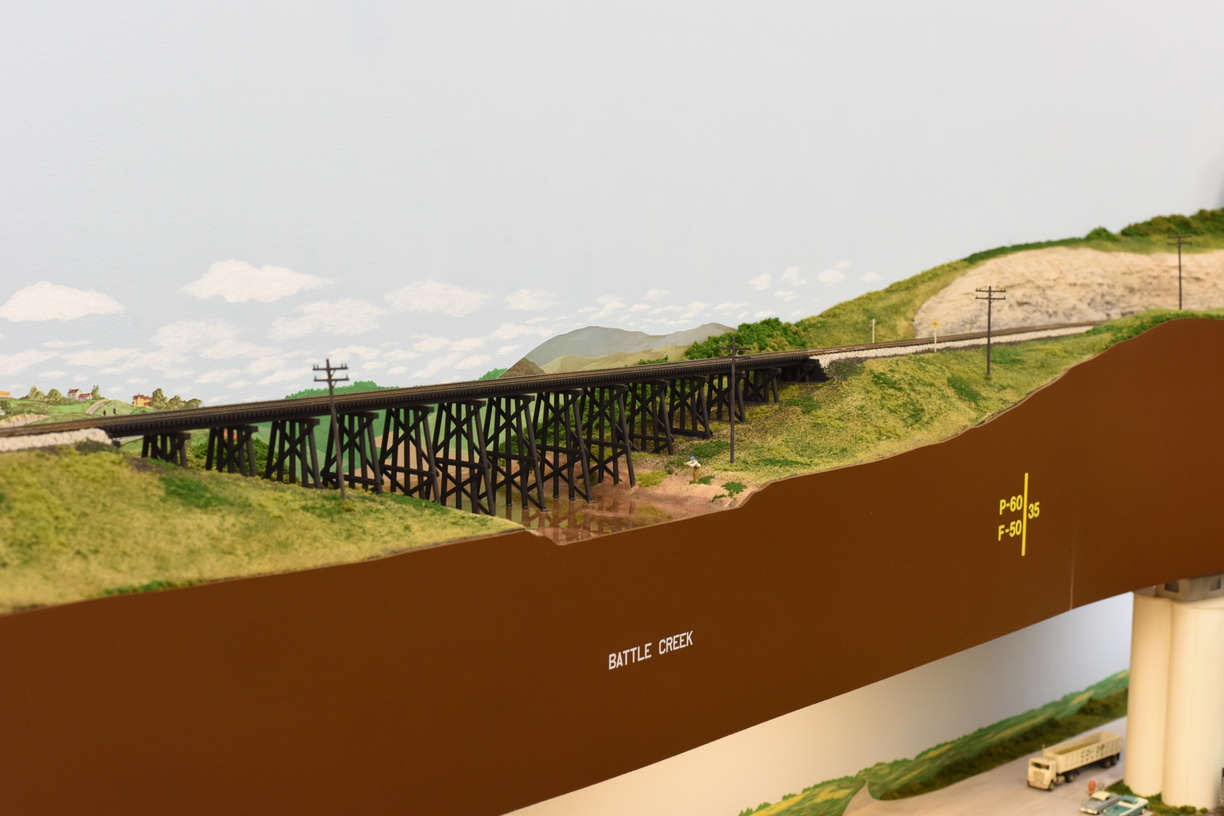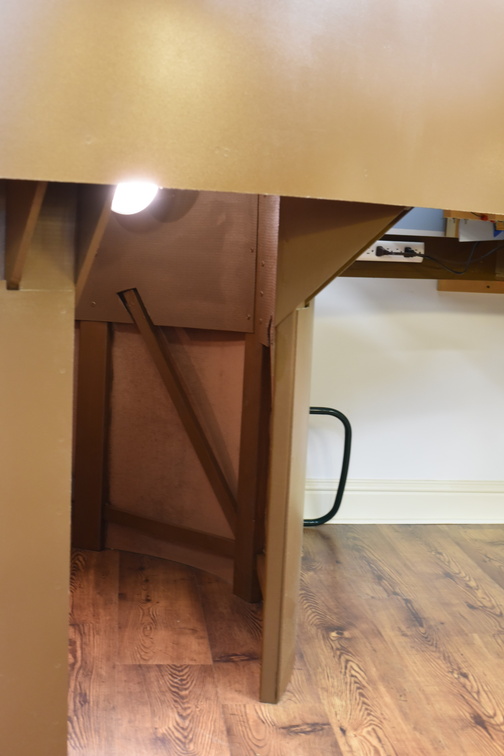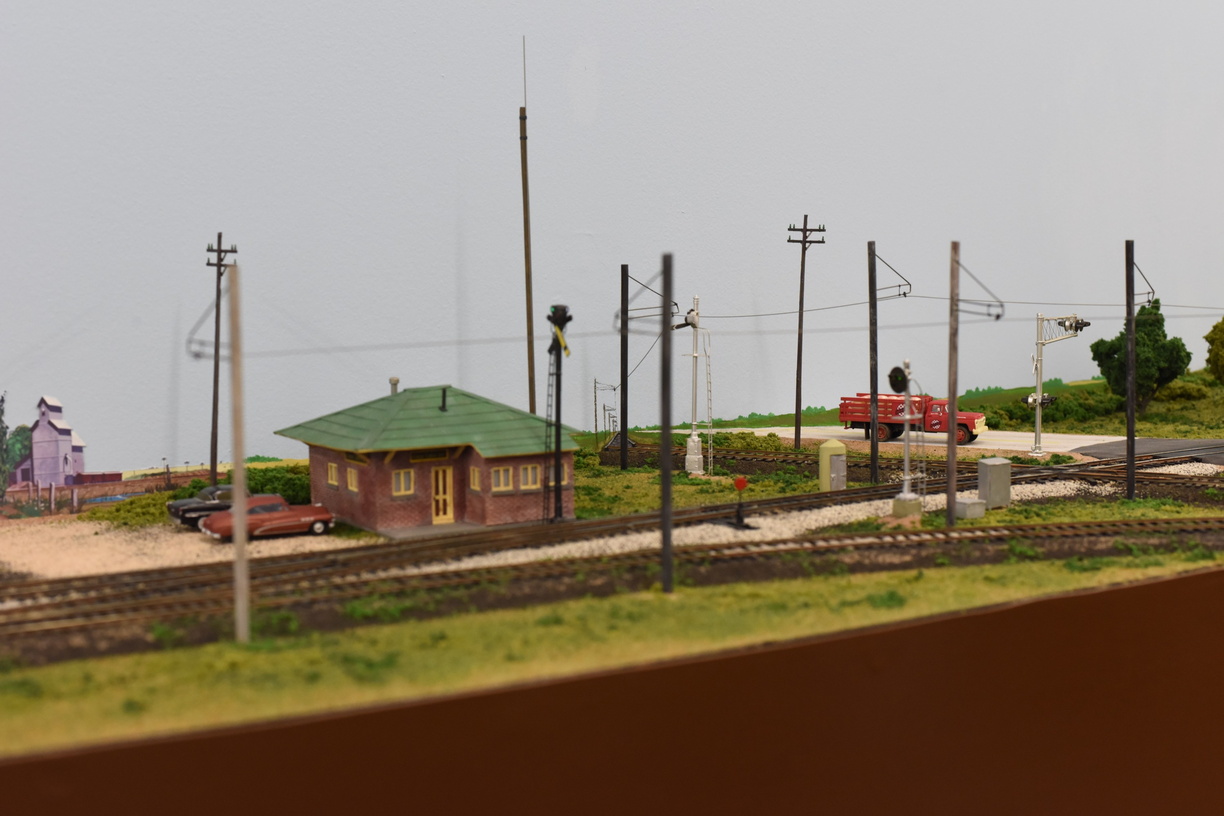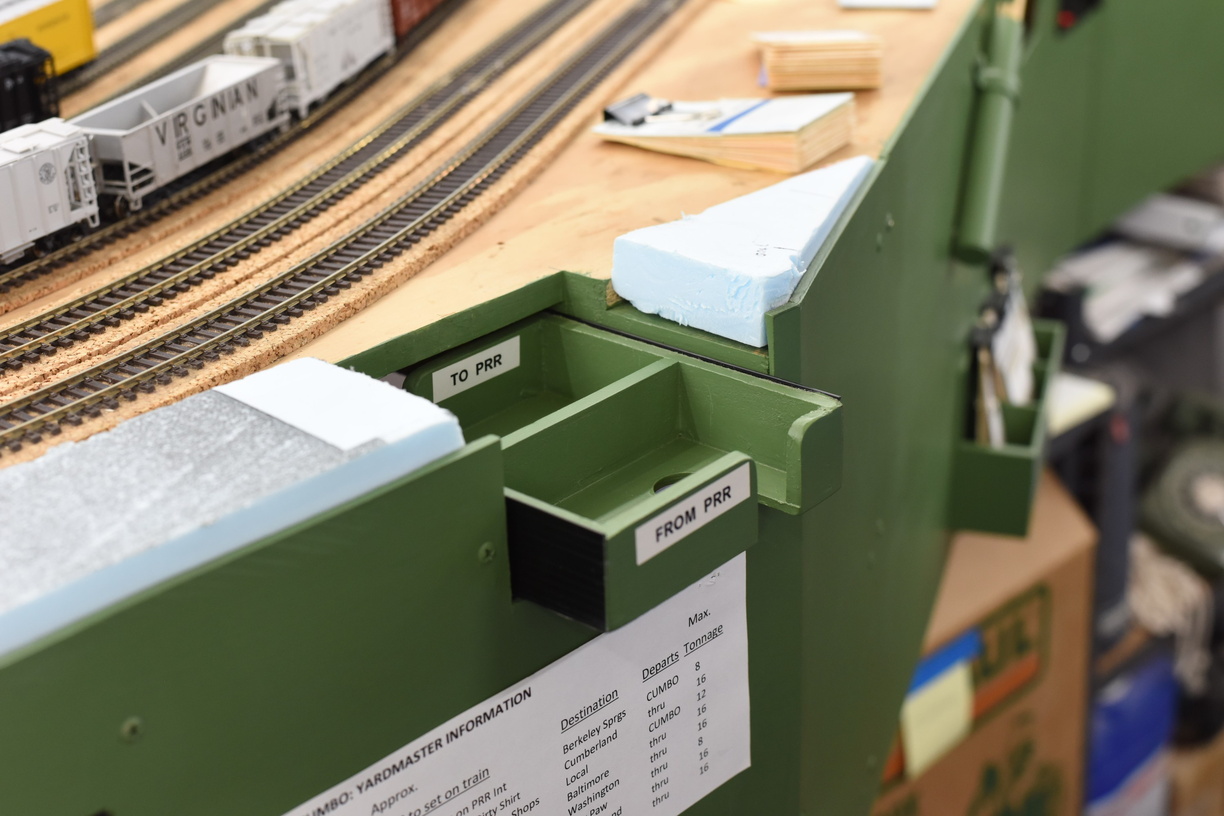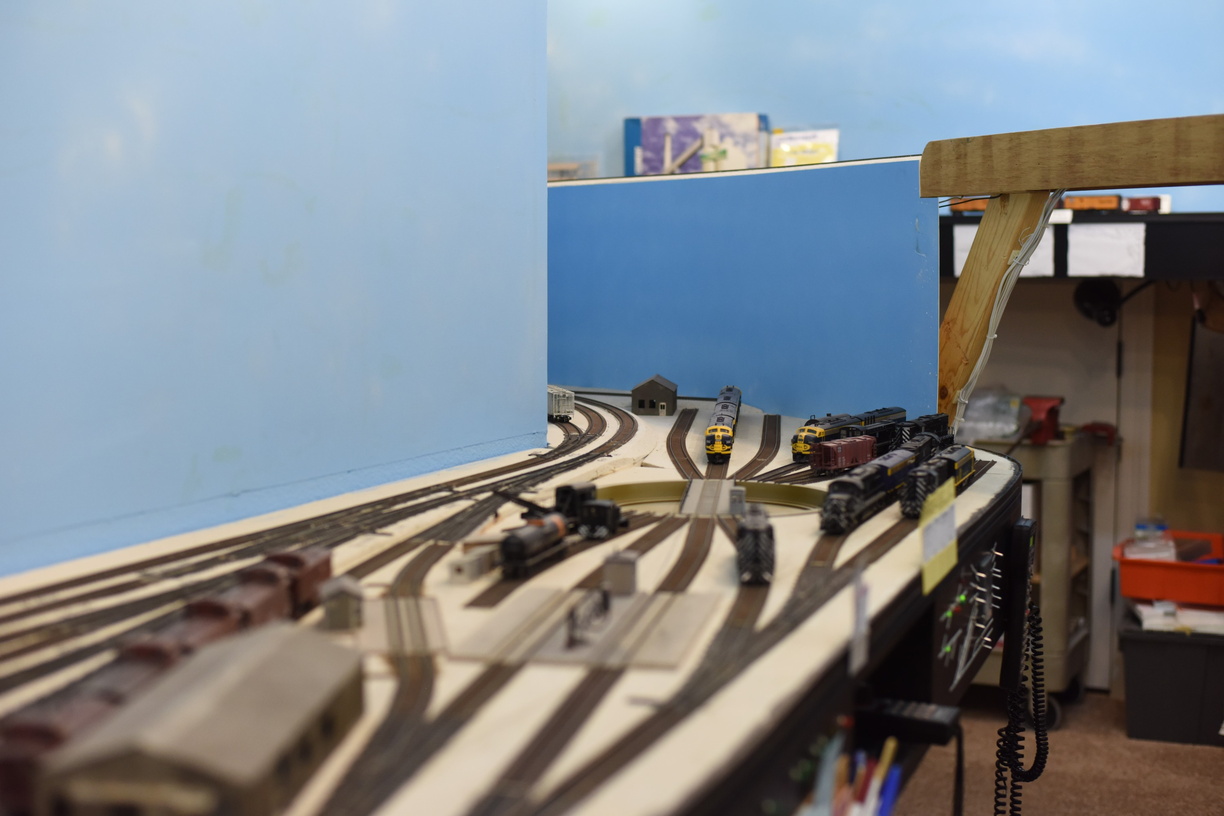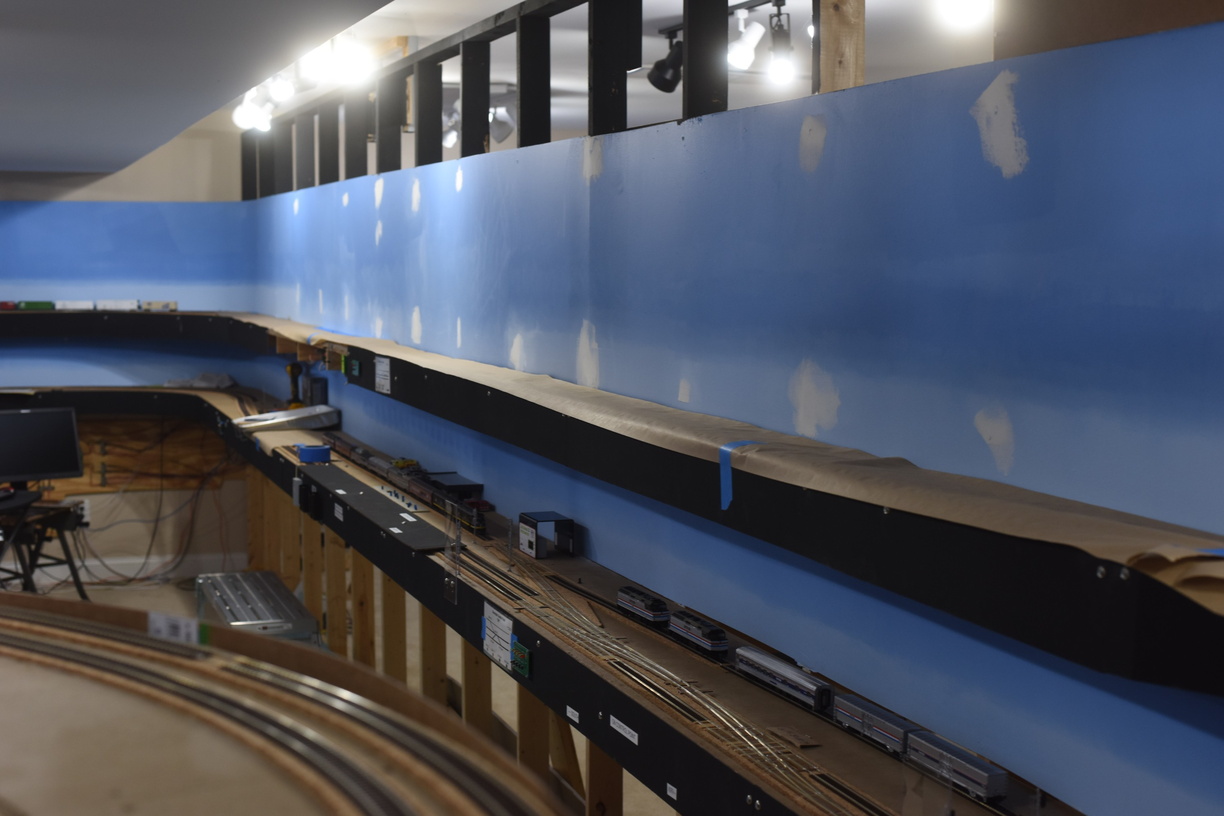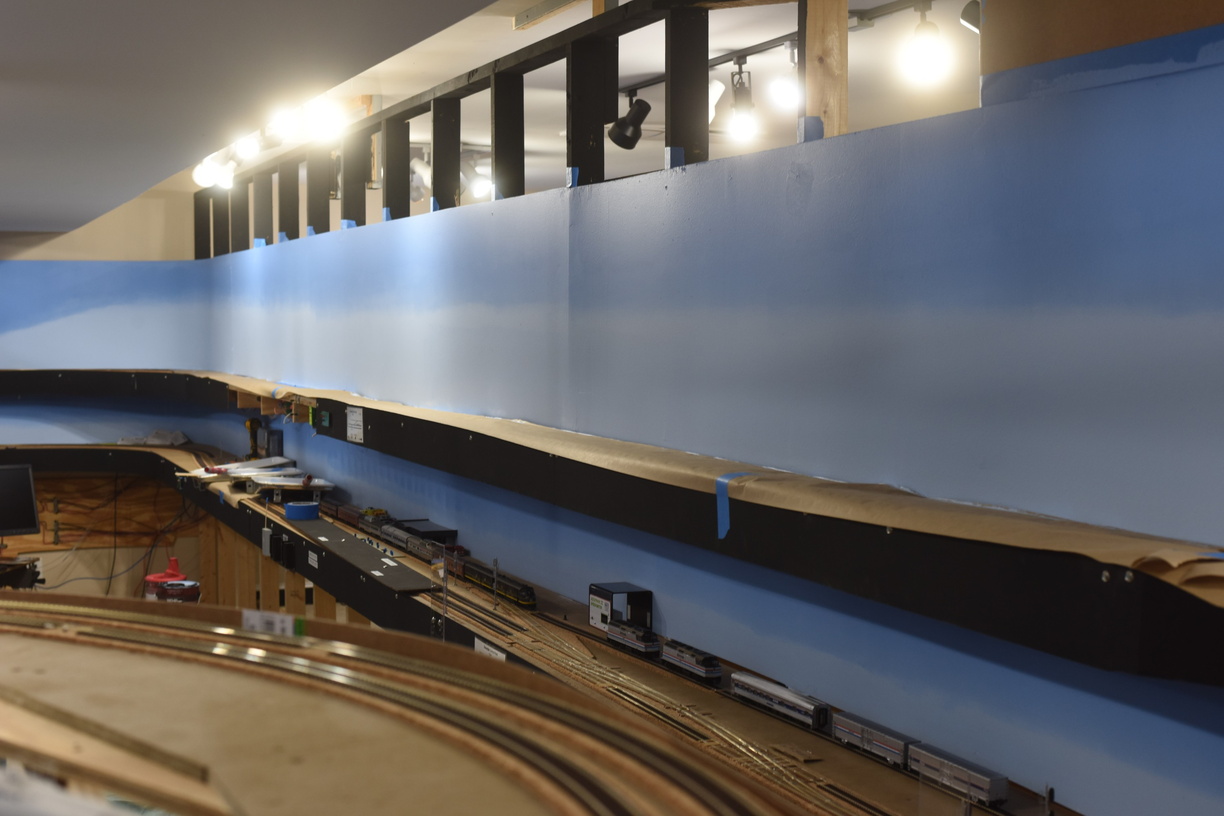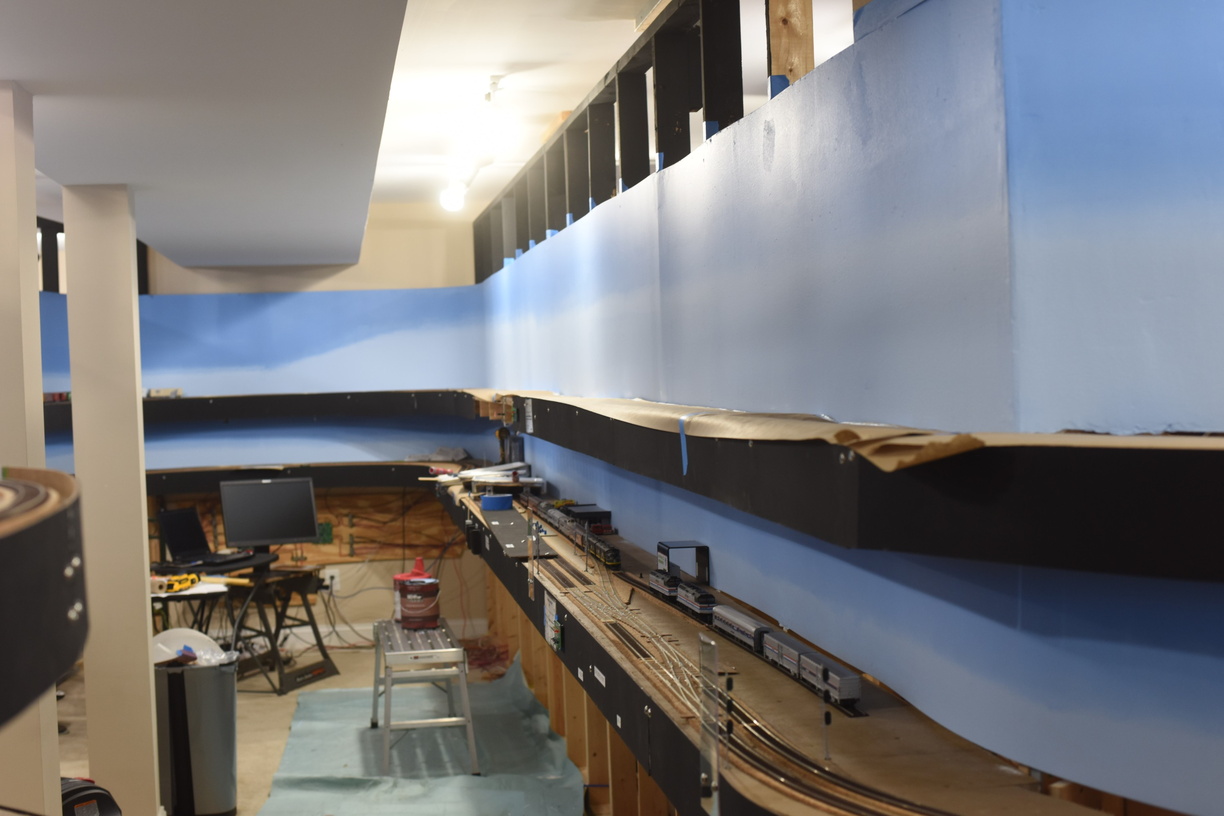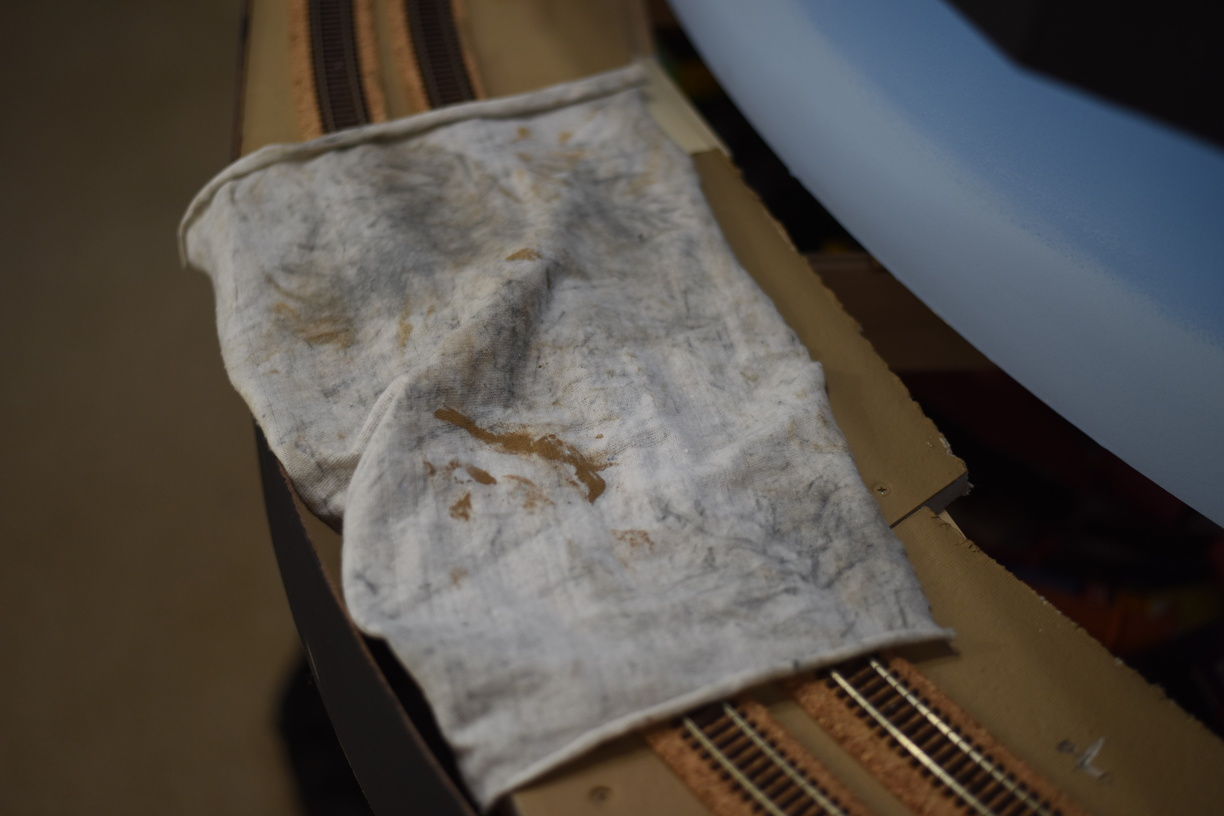Interchanges on a model railroad have been termed "universal industries" as they could take any car type, from boxcars to flatcars to tankcars to gondolas to covered hoppers and anything else you might desire.
They also add some operating interest, as it can be a reason to have some foreign road power on your layout (assuming that is not common in your era; in the RTRR's era, foreign power is somewhat common as trailing units, due to the cab signaling requirements on the RF&P mainline), as well as a reason to signal a crossing.
Brooke, VA is a location in the real world. It is in Stafford County, south of Quantico and north of Hamilton, and is not all that far from the Potomac river. Today, there is a Virginia Railway Express (VRE) station in this general area.
The late Keith Stillman drove the Easton and Potomac's mainline through this area when he designed and built his layout, giving him an interchange with the RF&P, and allowing him to logically lengthen the run between Hood and Thorny Point by installing signals to protect the diamond crossing.
As an operator, you would hit a button to request permission to cross. A script ran on a computer under the layout and eventually would give you the light. It was random-ish, and more than a few engineers found themselves cooling their heels for many minutes waiting on the signal to go green.
As the Richmond Terminal goes through this area, I felt it appropriate to add an interchange to honor Keith and his railroad. I assumed that a few of the industries would still be going concerns, mostly in the Hood, Flat Top and Thorny Point areas. The steamships would be long gone by the 1990s, but I assumed that Thorny Point would develop a robust boat building industry for small pleasure and working craft, taking advantage of the sheltered location on a major river that fed into the Chesapeake Bay, and also pick up a few military and government contracts due to their proximity to DC. I assumed that Hood Brothers packing in Hood continued to go strong and continued to send refrigerator cars of pork products out to the larger world. The line all the way to White Hall wouldn't have survived, as it was mostly a bridge line at that point, as modeled, and as the railroads consolidated in the 1960s, it wouldn't have enough business to be a going concern, but the eastern end would survive as the E&P Short Line.
Now that I knew where it needed to go, I just needed to build it.
I tried a couple of different track layouts to make it fit. Originally, I planned to copy the layout from the E&P and put the interchange track on the NE quadrant of the crossing.
This would only give me a foot or two of interchange track, which might be 3 cars, if they are short.
So, I had to take a bit of modeler's license and move it.
I added a crossover to help keep traffic moving, and give a train working the interchange a way to stay off at least 1 of the mainline tracks, while giving the dispatcher a way to work around it.
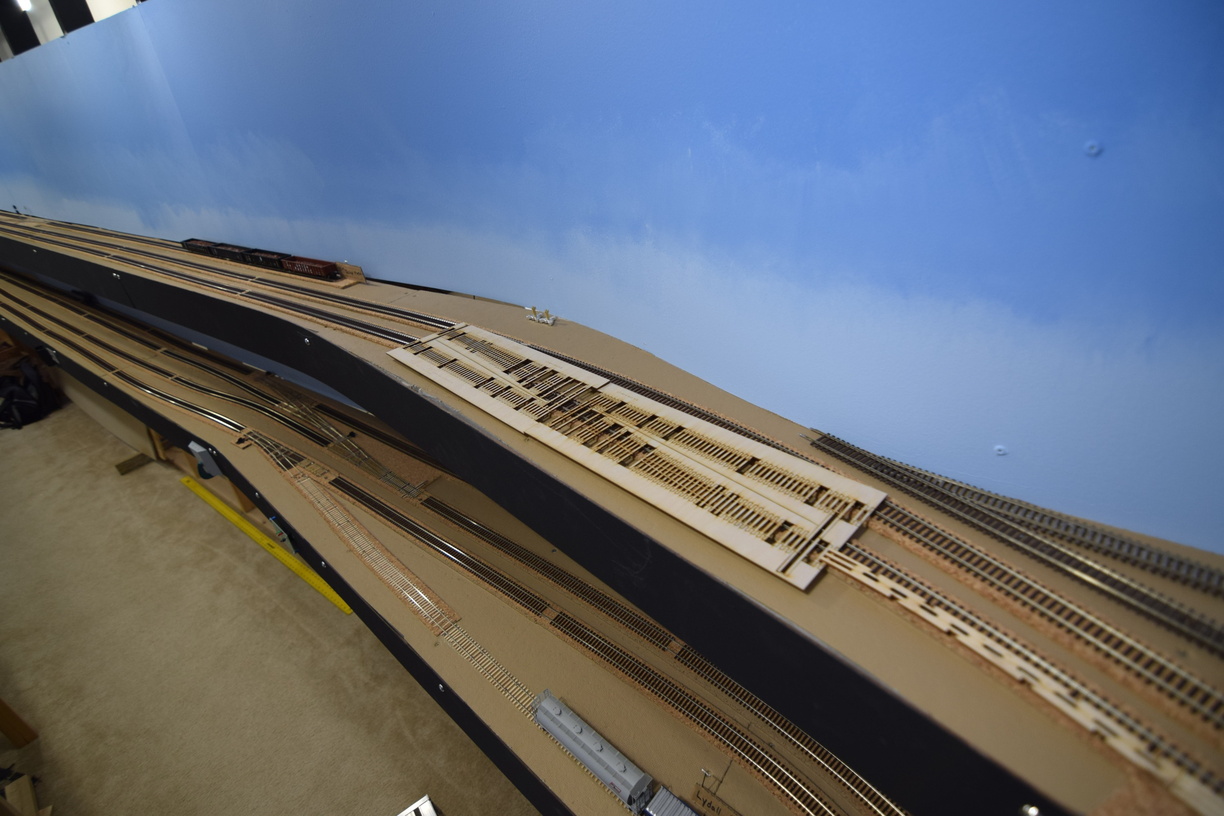 |
| #8 RH Crossover; Fast Tracks quick stick ties out to help me gauge sizes and locations. |
Once I way happy with the plan, I pulled up the mainline.
Note the perpendicular cork down for the location of the originally planned set of diamonds.
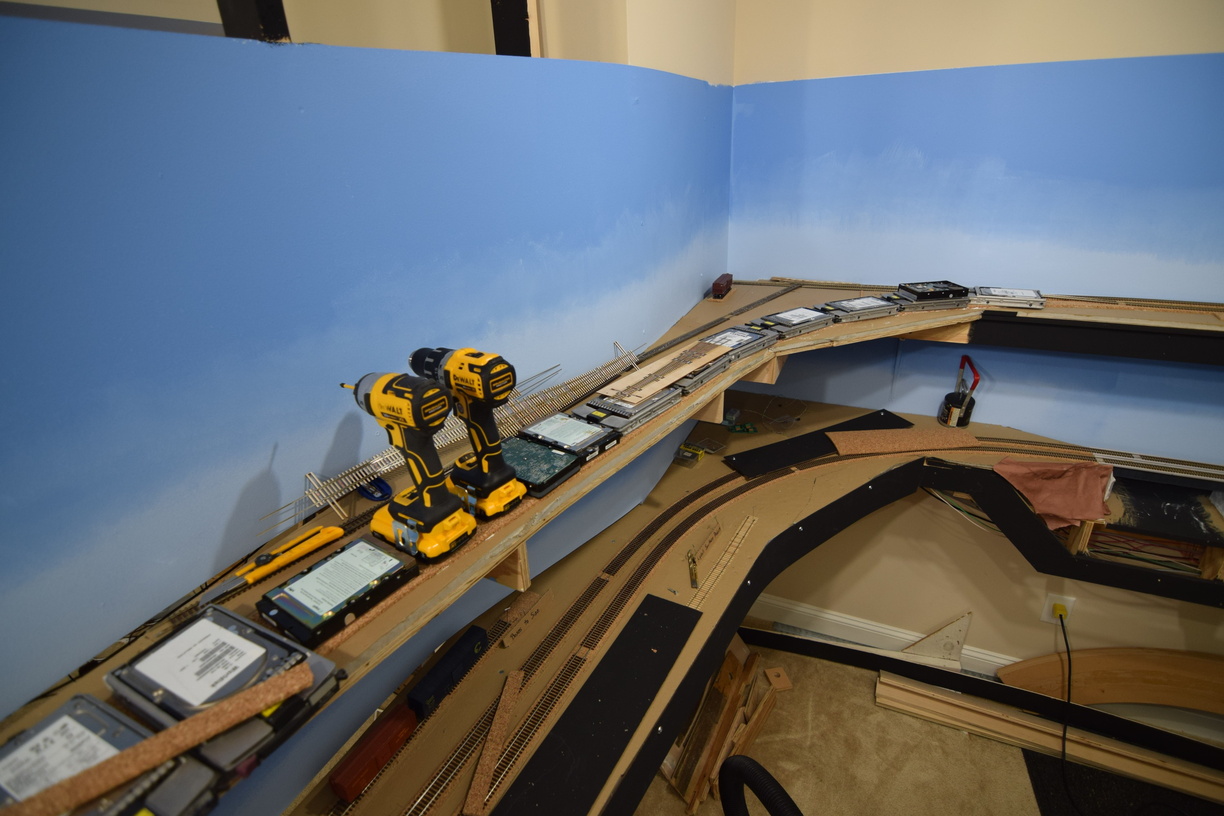 |
| Note the crossover leaned up on the backdrop. |
